Post by paulchapman on Sept 11, 2008 13:35:03 GMT
Rob Lee of Lee Valley recently published some pictures of the new Veritas skew rebate (or rabbet) plane on the Australian forum. I was very excited about this plane because it appeared to overcome many of the defects inherent in other planes of this type. I was therefore delighted to see that Matin Brown of BriMarc had two (a left-hand and a right-hand) on his stand at Yandles last Saturday. They had arrived from Canada only a couple of days beforehand.
Martin and I had a play around with the right-hand version and my delight with how well it worked must have been very obvious, because Martin asked whether I would like to borrow it and do a review. I jumped at the chance ;D
Rob Lee describes the plane as being inspired by the (no longer available) Stanley #289 pictured below
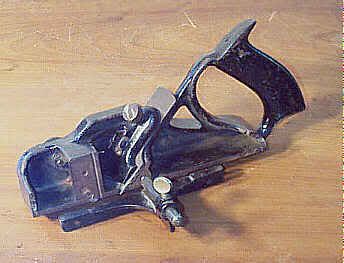
The plane that most people will be familiar with which is most like it (but without a skew blade) and currently available is the Record #778. Here's mine

Here are some general pictures of the new Veritas
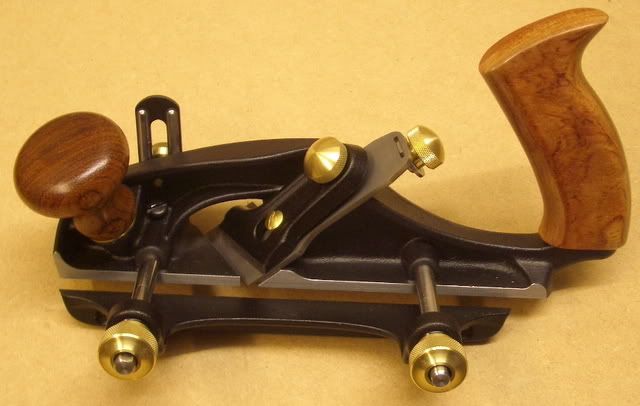

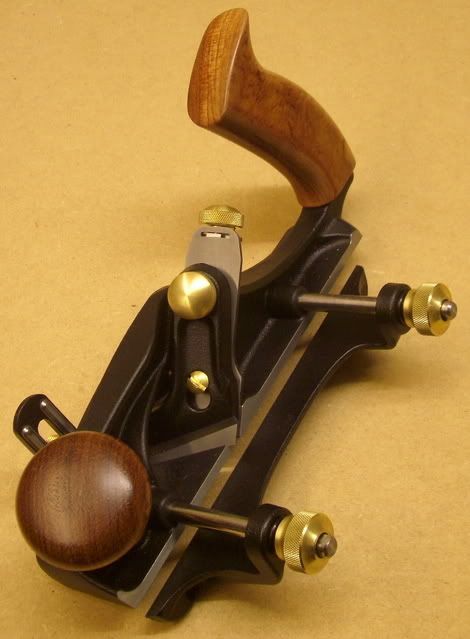
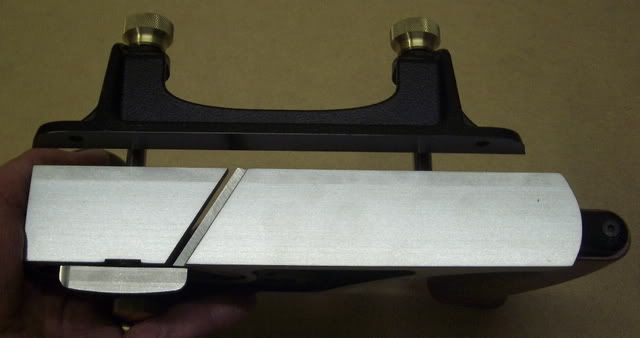
The plane body is made from ductile cast iron and the various knobs from brass. The blade, which is skewed at 30 degrees, is made from A2 tool steel and the back is lapped dead flat on Lee Valley's super lapping machine.
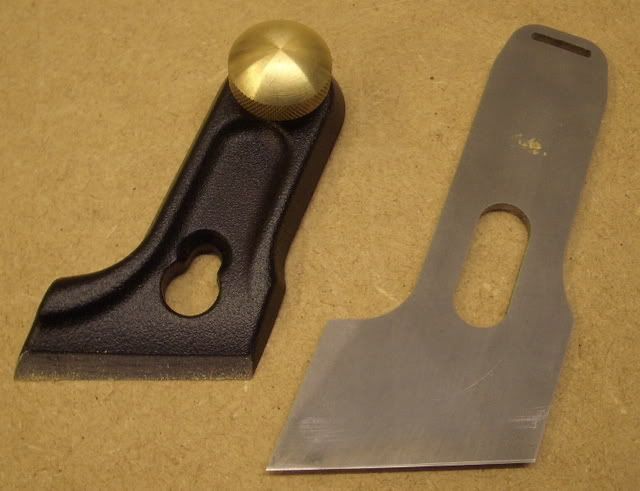
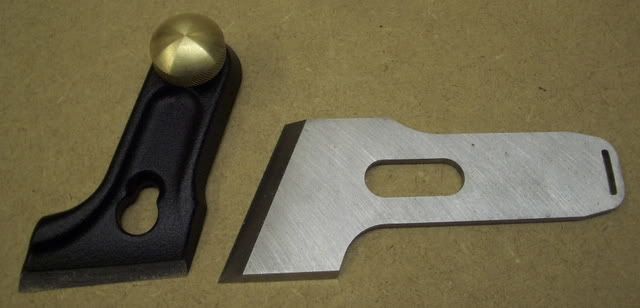
The handle and knob are Bubinga.
The design and engineering of this plane ooze quality and it is worth highlighting certain features which make it such a joy to use.
The plane has the now familiar grub screws to assist with the location of the blade
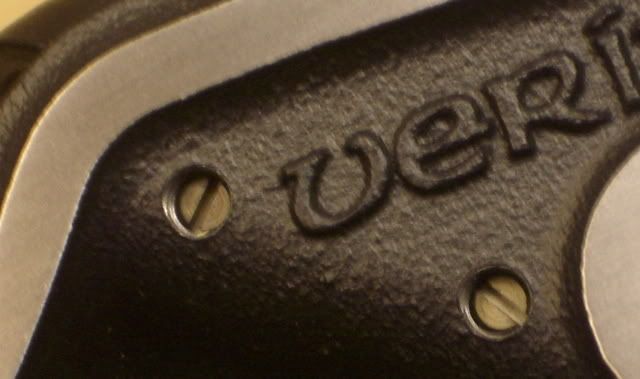
The blade adjuster has a thick, stainless steel washer with a peg which locates in the slot in the blade
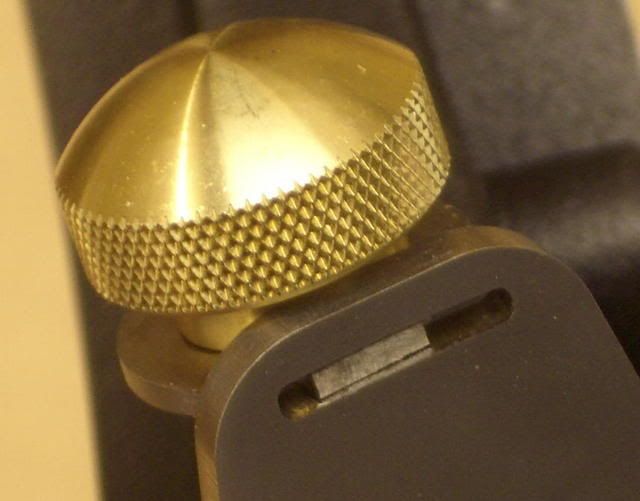
This does not revolve when adjusting the blade and the conbination of this together with the grub screws means that the blade does not skew out of alignment when adjusting the depth of cut - in my view a very important feature.
The depth stop slides on two beautifully machined grooves and is secured with a brass knob
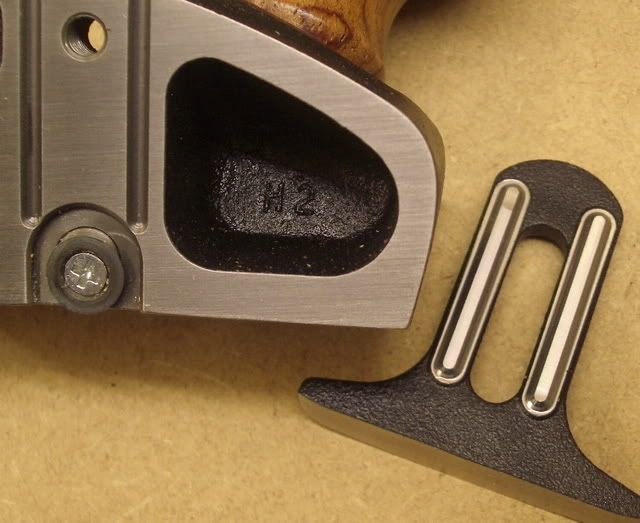
Now for the feature which sets this plane apart from all other fenced, metal, rebate planes - the cross-grain scoring blade. This is in the form of a wheel which is attached to an axle off-centre. This enables it to be raised or lowered. To do this, slacken off the screw behind the front knob
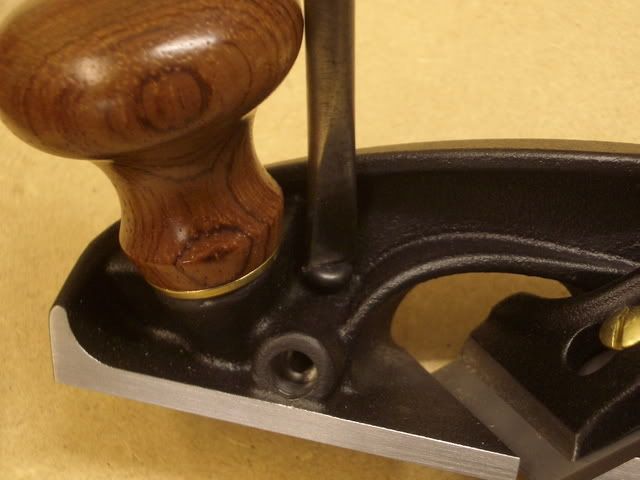
Then adjust the wheel
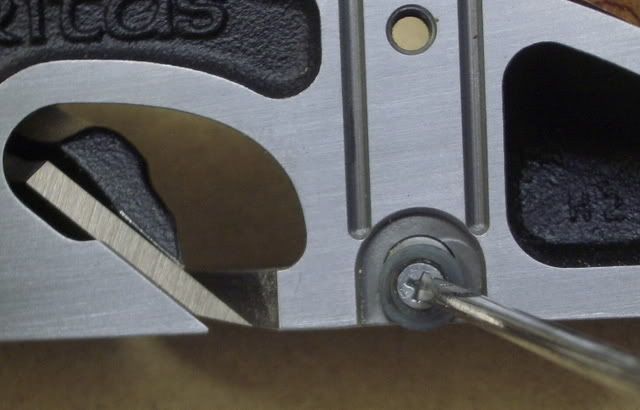
Now for the best bit. When in use the scoring wheel needs to be aligned with the outside edge of the blade. No other similar plane has a mechanism for doing this but Rob Lee and his team have come up with a brilliant solution. Remove the front fence rod and inside the hole you will find a short rod with a slot. Insert a screwdriver and adjust the rod which allows the scoring blade to be moved in and out.
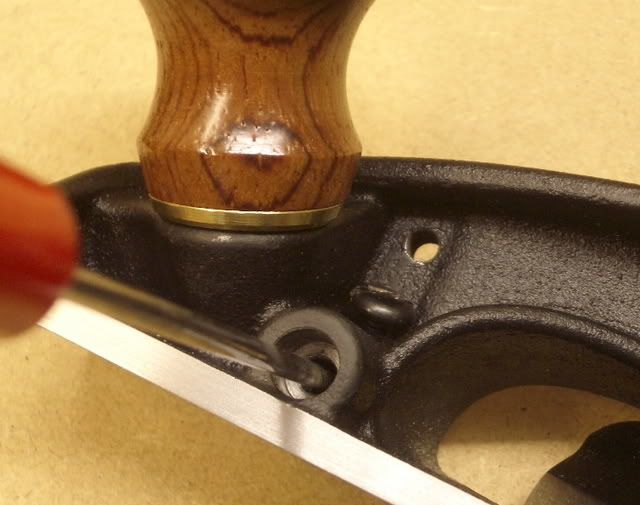
When set, tighten the screw behind the front knob. For me, it's worth buying the plane just for this feature
I did wonder whether it would be possible to re-adjust the wheel without disturbing the fence setting, should this be necessary. I found that it was by simply removing the front fence rod and leaving the rear one in position.
The fence is particularly nice. It's held in place by a collet and brass nut arrangement which enables the fence to be adjusted by hand
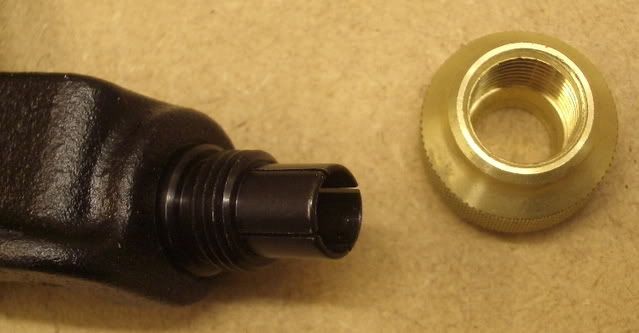
The fence is drilled to enable you to fit a wooden facing if you wish.
To assist with honing the blade, Veritas make a skew registration jig to fit their Mk 2 honing guide. I didn't have one of these but it was easy to make up a setting block to position the blade for honing
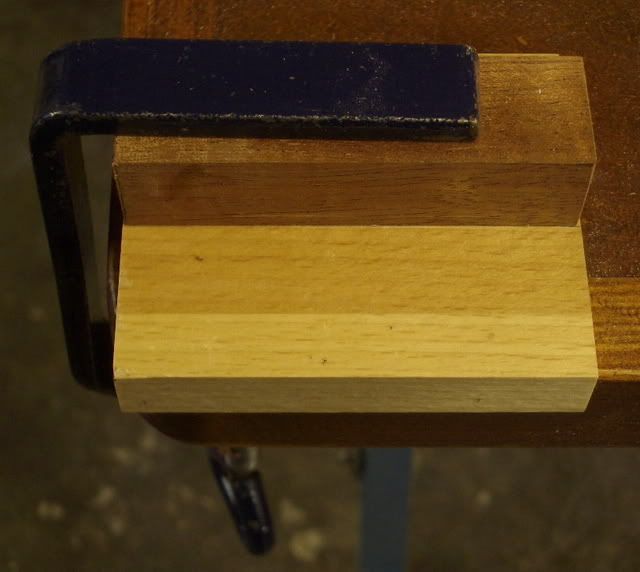
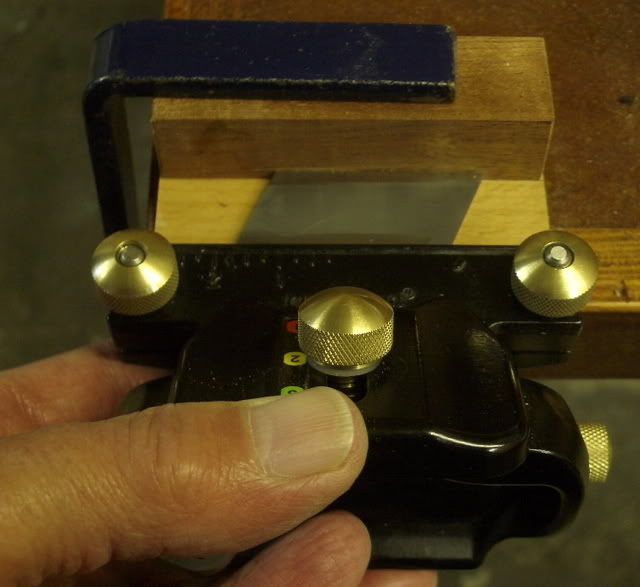
I tried out the plane on various woods but here it is in use on some mahogany-type wood. I started off by scoring the wood by drawing the blade backwards with the scoring blade lowered
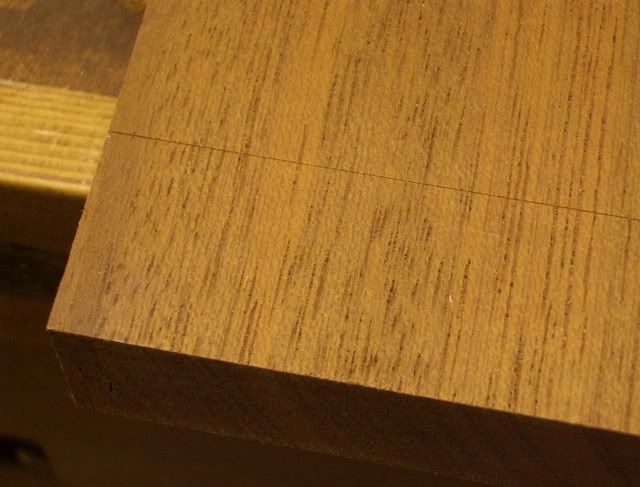
I then took quite thin shavings as I was working across the grain
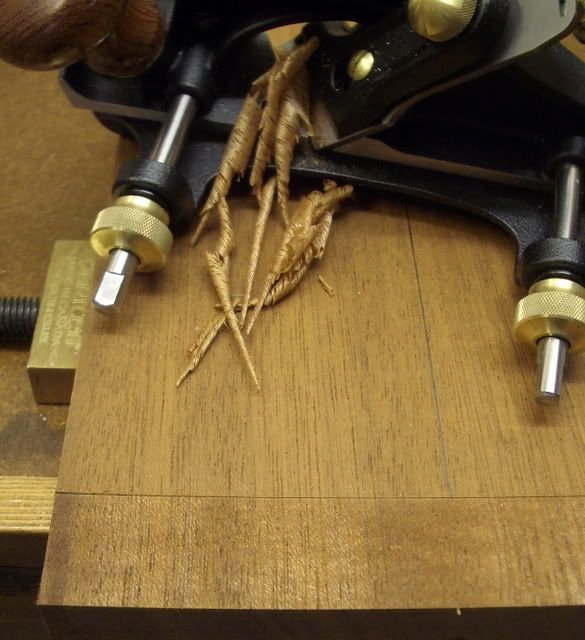
When using the plane, it's important to maintain pressure against the fence. I found that there was a convenient position just in front of the blade so that I could maintain downward pressure with my thumb while pressing against the fence with my fingers
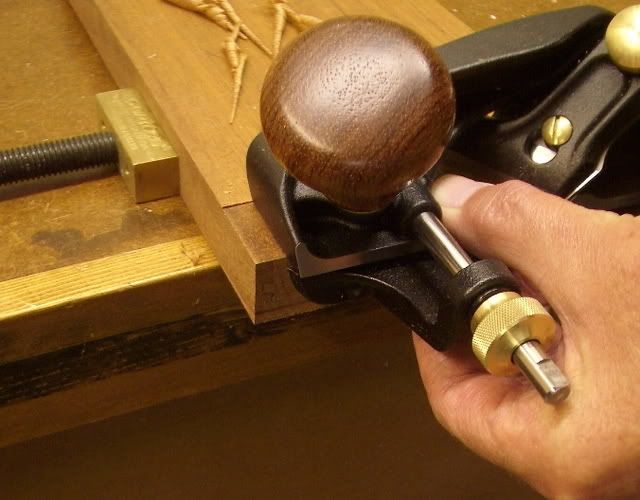
This picture shows the nice crisp, clean cut I was able to make
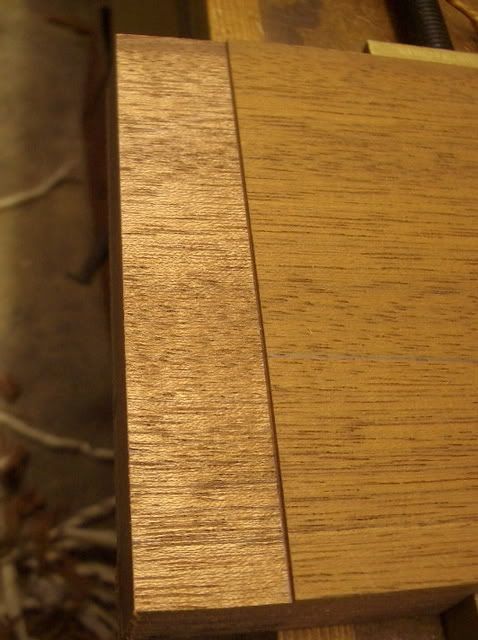
I then made some cuts along the grain, taking much thicker shavings
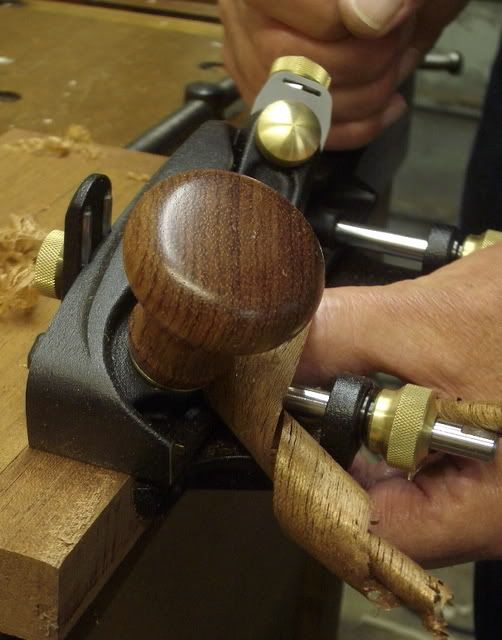
As I neared the finished depth, I adjusted the blade to take finer shavings - this is where the precise blade-setting ability came into play enabling the blade to be adjusted without it moving sideways. I was able to line up the depth of cut precisely with the cross-grain rebate

In conclusion, I found this plane stunning in its design, engineering and operation. Rob Lee and his team have taken a long, hard look at fenced, metal, rebate planes and have sorted out all the problems that have, in the past, made them so cumbersome to use. The Veritas skew rebate is an absolute joy to use and I'll probably shed a tear or two when Martin asks for this one back
Martin did not have the UK price available at the time of writing but I'll update this post with details as soon as I know them.
Cheers
Paul
Martin and I had a play around with the right-hand version and my delight with how well it worked must have been very obvious, because Martin asked whether I would like to borrow it and do a review. I jumped at the chance ;D
Rob Lee describes the plane as being inspired by the (no longer available) Stanley #289 pictured below

The plane that most people will be familiar with which is most like it (but without a skew blade) and currently available is the Record #778. Here's mine

Here are some general pictures of the new Veritas




The plane body is made from ductile cast iron and the various knobs from brass. The blade, which is skewed at 30 degrees, is made from A2 tool steel and the back is lapped dead flat on Lee Valley's super lapping machine.


The handle and knob are Bubinga.
The design and engineering of this plane ooze quality and it is worth highlighting certain features which make it such a joy to use.
The plane has the now familiar grub screws to assist with the location of the blade

The blade adjuster has a thick, stainless steel washer with a peg which locates in the slot in the blade

This does not revolve when adjusting the blade and the conbination of this together with the grub screws means that the blade does not skew out of alignment when adjusting the depth of cut - in my view a very important feature.
The depth stop slides on two beautifully machined grooves and is secured with a brass knob

Now for the feature which sets this plane apart from all other fenced, metal, rebate planes - the cross-grain scoring blade. This is in the form of a wheel which is attached to an axle off-centre. This enables it to be raised or lowered. To do this, slacken off the screw behind the front knob

Then adjust the wheel

Now for the best bit. When in use the scoring wheel needs to be aligned with the outside edge of the blade. No other similar plane has a mechanism for doing this but Rob Lee and his team have come up with a brilliant solution. Remove the front fence rod and inside the hole you will find a short rod with a slot. Insert a screwdriver and adjust the rod which allows the scoring blade to be moved in and out.

When set, tighten the screw behind the front knob. For me, it's worth buying the plane just for this feature

I did wonder whether it would be possible to re-adjust the wheel without disturbing the fence setting, should this be necessary. I found that it was by simply removing the front fence rod and leaving the rear one in position.
The fence is particularly nice. It's held in place by a collet and brass nut arrangement which enables the fence to be adjusted by hand

The fence is drilled to enable you to fit a wooden facing if you wish.
To assist with honing the blade, Veritas make a skew registration jig to fit their Mk 2 honing guide. I didn't have one of these but it was easy to make up a setting block to position the blade for honing


I tried out the plane on various woods but here it is in use on some mahogany-type wood. I started off by scoring the wood by drawing the blade backwards with the scoring blade lowered

I then took quite thin shavings as I was working across the grain

When using the plane, it's important to maintain pressure against the fence. I found that there was a convenient position just in front of the blade so that I could maintain downward pressure with my thumb while pressing against the fence with my fingers

This picture shows the nice crisp, clean cut I was able to make

I then made some cuts along the grain, taking much thicker shavings

As I neared the finished depth, I adjusted the blade to take finer shavings - this is where the precise blade-setting ability came into play enabling the blade to be adjusted without it moving sideways. I was able to line up the depth of cut precisely with the cross-grain rebate

In conclusion, I found this plane stunning in its design, engineering and operation. Rob Lee and his team have taken a long, hard look at fenced, metal, rebate planes and have sorted out all the problems that have, in the past, made them so cumbersome to use. The Veritas skew rebate is an absolute joy to use and I'll probably shed a tear or two when Martin asks for this one back

Martin did not have the UK price available at the time of writing but I'll update this post with details as soon as I know them.
Cheers

Paul



 ;D
;D


